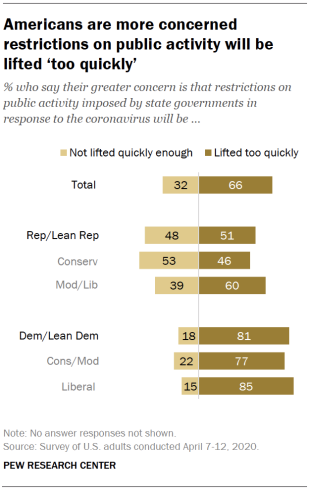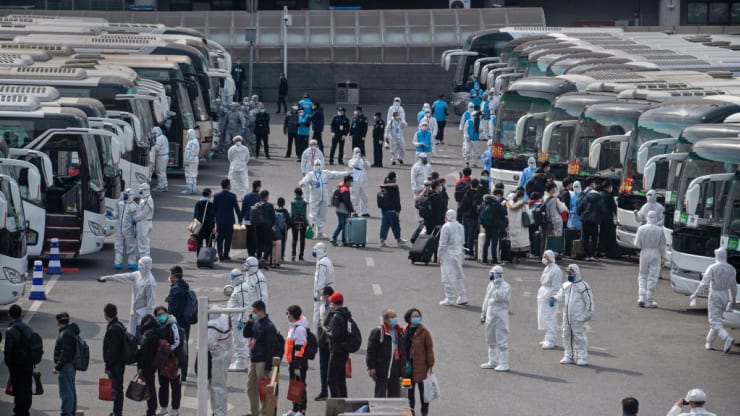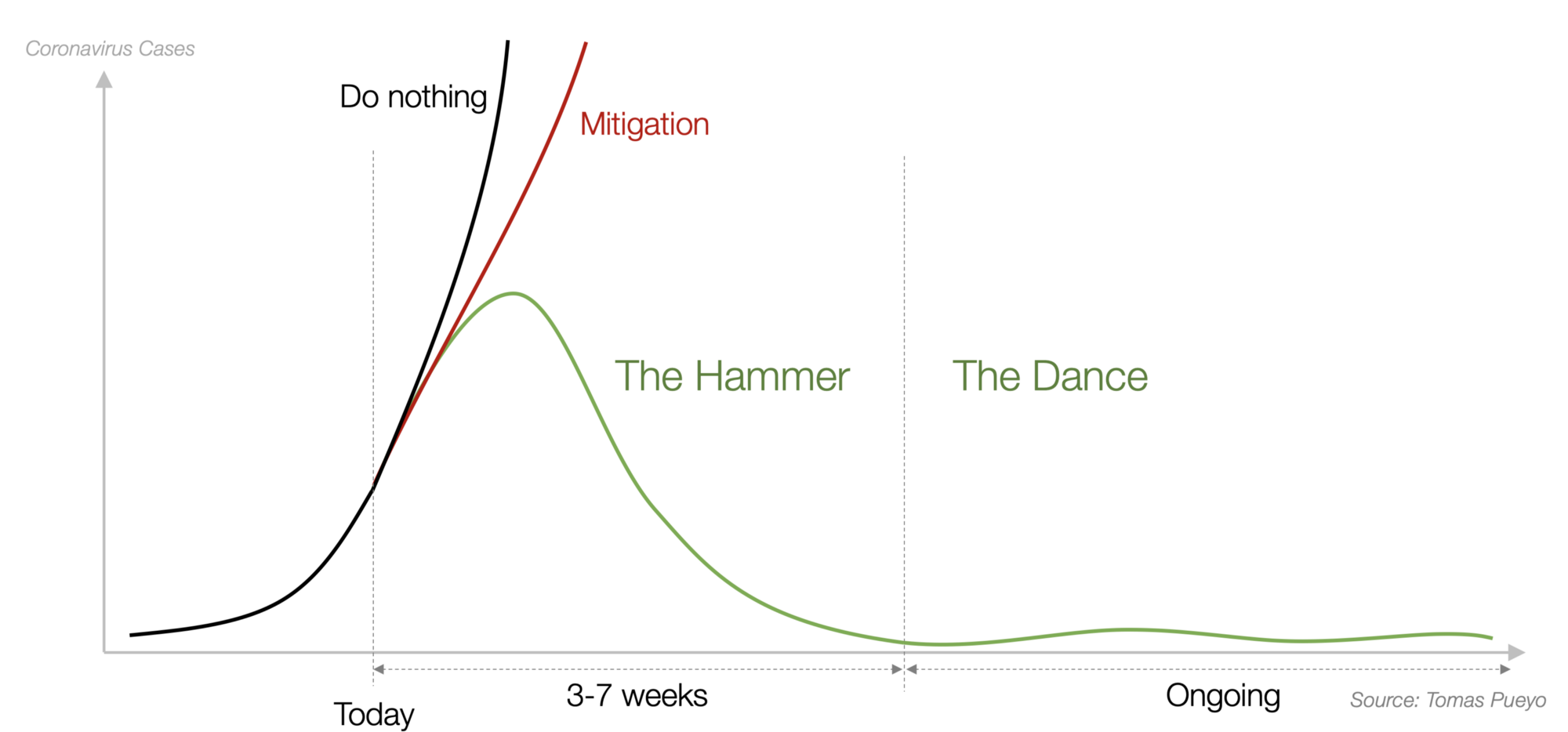COVID-19: How long until things return to normal?

A few minutes every morning is all you need.
Stay up to date on the world's Headlines and Human Stories. It's fun, it's factual, it's fluff-free.
After weeks of lockdowns and social distancing around much of the world, some countries are starting to have serious debates over when to end their emergency shutdowns.
In China, much of the economy is starting to reopen as virus cases have dwindled over the past month, while some of the hardest-hit places in Europe are taking tentative steps of their own.
In Germany, small shops and secondary schools will reopen on May 3, while in Italy some businesses outside of the Lombardy region – the epicenter of the virus in the country – have started to reopen. Similarly, factories and manufacturing in Spain resumed work on April 13.
While no nation has instituted a full return to normal, many policymakers are attempting to make calculations based on data that suggests the worst of the virus may have passed.
In the United States, the debate is in full swing. In some places across the country, protests have taken place calling for the government to relax restrictions.
There is little evidence, however, that a majority of Americans agree with the protestors’ sentiments. According to a recent Pew Research poll, 66% of the public worry that the government will open up the country too quickly.

As President Trump publicly pushes to reopen the US sooner rather than later, some medical experts are warning that attempts to reopen too soon could have disastrous effects on the medical community’s ability to maintain control over the virus.
According to Ben Cowling, a professor at the School of Public Health at the University of Hong Kong, opening up at the wrong time could unintentionally lead to another wave of infections.
“I think having timelines is going to be very challenging. No country is going to want to open up too early, and then be the first major country to have a big second wave,” he said.

With this in mind, how long will it take until some semblance of normalcy returns to people’s lives?
Eye on science
In looking into potential scenarios regarding COVID-19 based on different policy actions, researchers at the Massachusetts Institute of Technology (MIT) found that reopening the US too soon would lead to “an exponential explosion in the infected case count, thus nullifying the role played by all measures implemented in the US since mid March 2020.”
MIT scientists went on to announce that their research “unequivocally indicates” that countries who implemented “rapid government interventions and strict public health measures for quarantine and isolation were successful in halting the spread of infection and prevent it from exploding exponentially.”
Another expert, Thomas Frieden, the former head of the CDC, is recommending that reopening the US should only occur if specific requirements are met.
These requirements include, among other things, a decline in cases over a two week period, tracing at least 90% of known cases’ contacts, establishing designated places for those who are infected to recover away from home, even if they have just mild cases of the virus, and ensuring health care workers are properly protected so they can’t get the virus.
In the US, virtually none of these provisions has been put in place.
White House Guidelines
An official government proposal on reopening the US was unveiled late last week. It recommends that the country reopen gradually in three phases. Doing so, it is believed, would mitigate the risk that virus numbers surge once again.
In phase one, sheltering at home would continue for vulnerable groups and social distancing would continue for all, but some people could start returning to work and restaurants, while places of worship and sports venues could reopen as long as protocols were observed.
In phase two, non-essential travel and schools could resume with “diminished standing room occupancy” while phase three would allow for “unrestricted work staffing” and the resumption of “public interactions,” albeit with distancing protocols still in place.
However, there is no specific timeline given as to when these actions would occur, the emphasis is instead placed on states to move forward as they see fit.
“We are not opening all at once, but one careful step at a time," Trump said during the White House briefing on the proposal.
Hammer and Dance
While the most direct way for citizens around the world to resume their normal lives would be a vaccine, even the most optimistic timelines suggest that a vaccine could still be 12 to 18 months away.
Most people with knowledge of vaccine-making processes, however, say producing a vaccine could take significantly longer.
Meanwhile, businesses in the private sector would like clarity from the government on when to reopen in order to soothe economic fears, with 2021 a likely go-to suggestion for a return to normalcy. In reality a firm date will likely be harder to pin down.
According to consultant and business owner Tomas Pueyo, until concrete measures to control the virus are developed, societies are likely to enter phases of “hammer and dance.”

This means that countries will impose lockdown measures when things get bad (the hammer), and subsequently ease restrictions while attempting to mitigate a resurgence of the virus (the dance). If countries aren’t careful enough, though, the cycle could keep repeating itself, making it difficult to adhere to strict timetables.
[article_ad]
Have a tip or story? Get in touch with our reporters here!
Sign up for daily news briefs from The Millennial Source here!




Comments ()